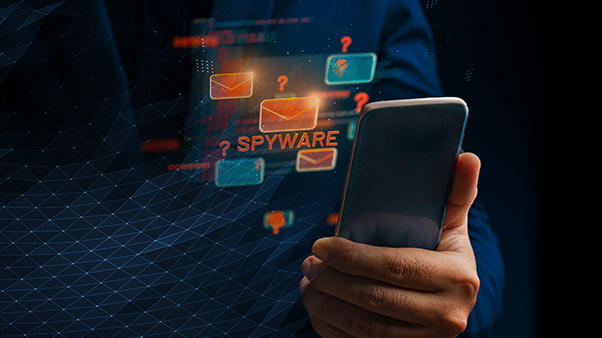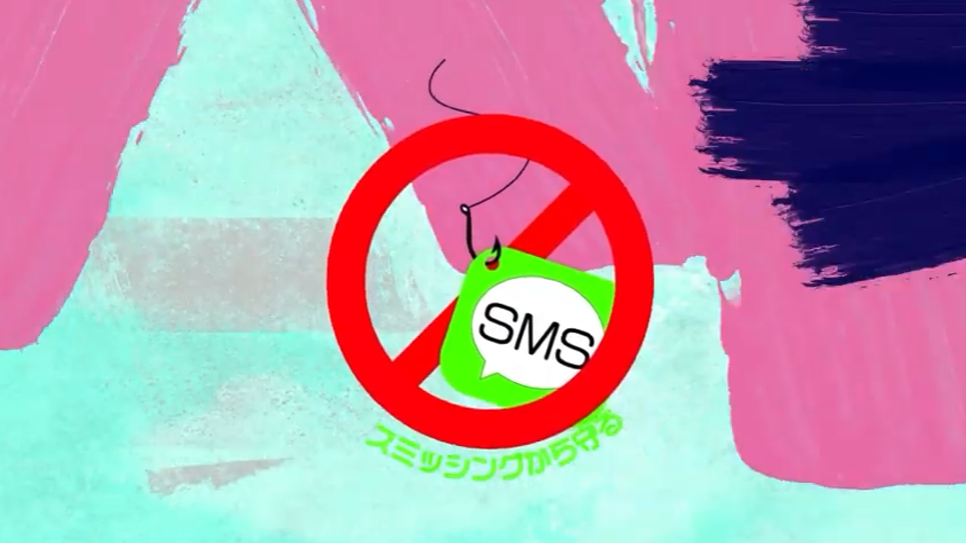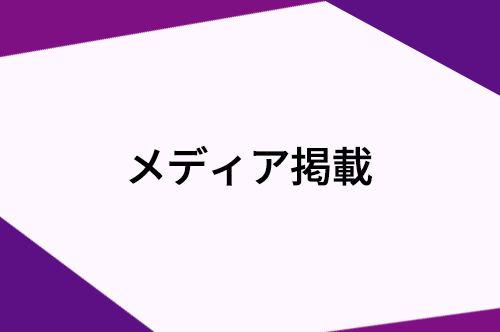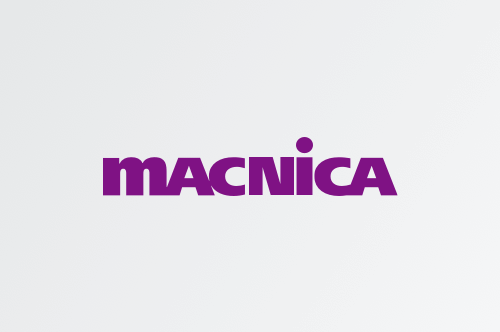
About reports
"Smishing" is a type of phishing act and is a coined word from SMS Phishing. It is a method of sending fraudulent messages by misusing SMS, directing recipients to fake websites, and stealing personal information. The economic damage caused by the unauthorized use of stolen information is expanding, and companies are struggling to come up with countermeasures.
In this report, we examine changes in criminal tactics based on smishing tactics that have actually been observed. We will explain the anti-smishing framework that can be specifically approached.
report highlights
Changes in Attackers, Expansion of Crime Base
We can presume that there are various attackers (scammers, phisher) behind smishing. Bank-affiliated smishing, which has been around since the dawn of time, has a high level of knowledge, operational levels, and organizationality in terms of targeting target banks and regions, methods of illegal withdrawals that break through authentication, and so on. In addition, it was presumed that there were multiple groups based on the tendency of smishing. Recently, there has been an increase in the number of scams targeting credit card and electronic payment information, mainly in EC and home delivery systems.
The total amount of smishing has increased, but at the same time, the following smishing has come to be seen here and there.
- The brand of the fake site and the brand of the SMS message do not match
- The Japanese in the text of the SMS is unnatural
Compared to attackers who have been active in the past, it is speculated that people with lower operational levels have started to participate and that there is a division of labor.
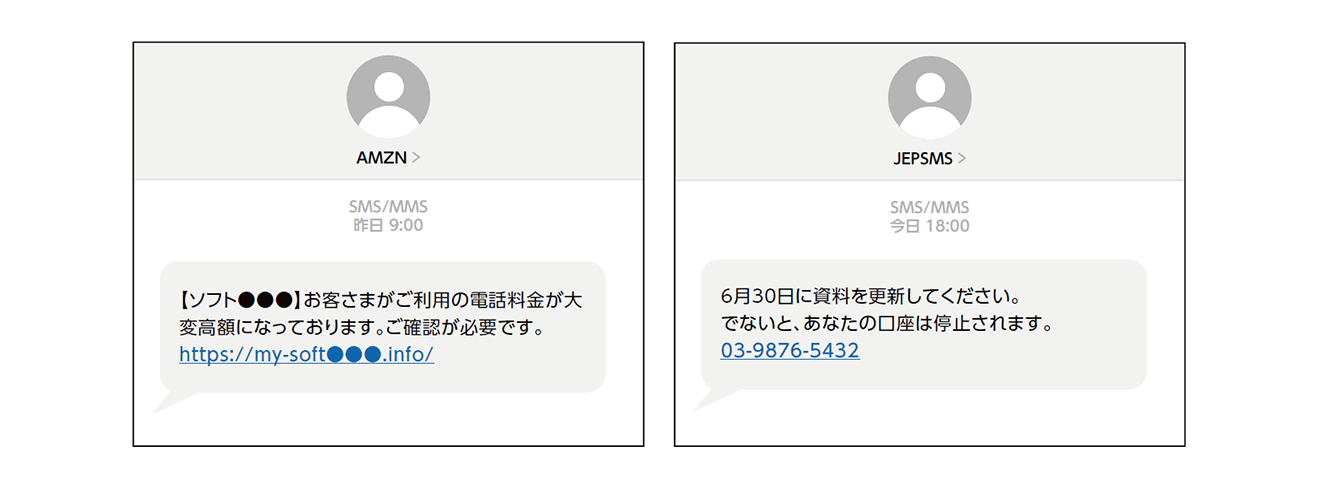
Cases of low operational levels have been reported
criminal ecosystem
Based on the information obtained from a series of surveys, we have illustrated the ecosystem of smishing crimes (Figure 1).
The ecosystem can be roughly decomposed into three markets.
- [Market 1] A fraud method called phishing/smishing is executed, and the stolen card information is converted into money.
- [Market 2] Unauthorized use of stolen credit card information to resell purchased products for money.
- [Market 3] Earn money by distributing purchased products to the consumer market.
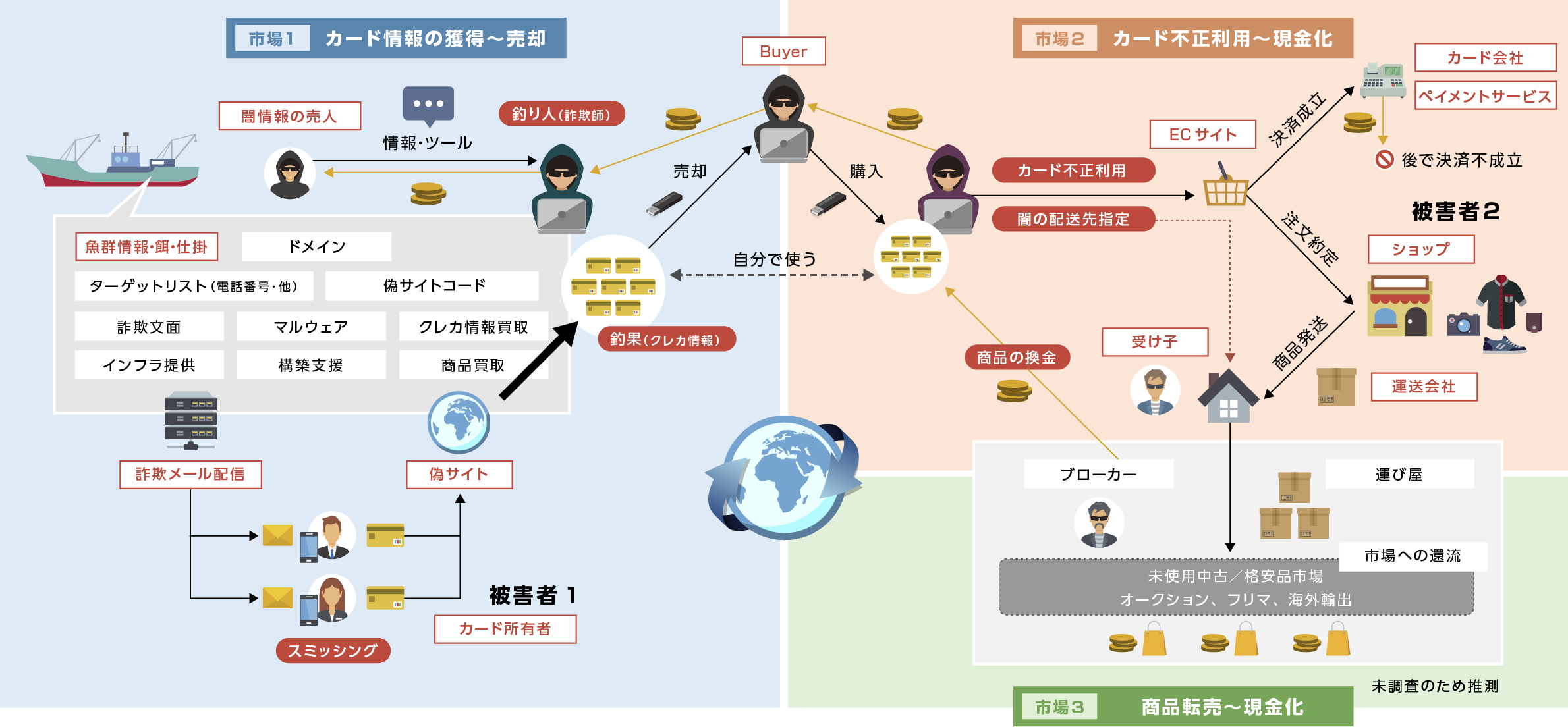
Figure 1: Criminal Ecosystem
Anti-smishing framework
In considering countermeasures, we defined a framework that follows the flow of smishing (Fig. 2).
Regarding measures that can be taken individually by companies and measures that can be taken by companies working together, distribution route measures, terminal measures, counterfeit site measures, fraudulent use measures, suspicious delivery measures, enlightenment and alerts, cooperation between companies and carriers , from the standpoint of cross-sectoral cooperation in the EC economic zone, describe the current situation, and propose future measures.

Figure 2: Anti-smishing framework
table of contents
- About Smithing
- Damage trends surrounding smishing
- Procedure of smishing
- Role and features of SMS in phishing
- SMS delivery routes and smishing transmission methods
- Identification of smishing delivery channels
- Trends in smishing and technical considerations
- Changes in Attackers, Expansion of Crime Base
- Smithing Crime Ecosystem
- Countermeasure approach
Inquiries regarding this report
Macnica
Telecom Security Service Room
